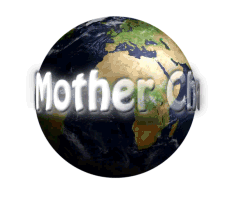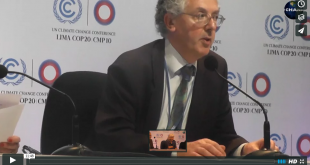Presenters from Korea Adaptation Centre for Climate Change (KACCC) speak on Korea’s Climate Change Impacts and Adaptation efforts, including International Cooperation for Adaptation, at COP 20, Lima, Peru.
Currently the degree of climate change on the Korean Peninsula is greater than the global average, even with Korean Government’s strong commitment, the fight against climate change still remains a formidable challenge, but have recently realized that the academic institutions are an untapped resource and have been engaging them on multiple levels. Institutions have focused students, a climate change curriculum is being integrated into the institutions and capacity building in terms of how to’s and sustainability to become part of these institutions in future.
In terms of climate change impacts, there are several communities that have moved at least three times in the last five years, mostly due to the rise in sea levels. In the Maldives and small island developing states, they are vulnerable, as are many others, but there is an area in the south where peace and order is an issue, however, they now have to contend with sea level rise too and we are also observing communities that are continuously under water at present. Issues like these need to be brought to the table and addressed globally. One of our main concerns, especially in the rural areas is salt water intrusion, and although we rely on between 80-90% rainfall in these areas, we need to invest more extensively in fresh water collection technology, because all indicators point to fact that salt water intrusion will become a reality in near future, which will severely impact on the rural communities in terms of health, food, etc.
Climate change trends in Korea are higher than the global average, examples of this are a temperature rise of + 1.8°C over 100 years in 6 major cities, (average + 0.9°C), the coastal sea level has increased by approximately 8 centimeters, with sea levels around Jeju Island rising as much as 22 centimeters (averaging 5.1 mm per year) and coastal seawater surface temperatures have increased to between + 1.2 – 1.6°C in a century.
These impact trends are affecting four main areas, viz; Public Health – Increase of widespread infectious diseases and increase in heatwave victims, Agriculture – Cultivation areas shifting/moving, Ecosystem – Increasing vulnerability in the subtropical zone and mountain areas, Rainfall – Rainfall intensity is doubled compared with that of the 1970s and infrastructure damage.
Such changes will have significant impacts on various sectors such as ecosystem, natural resources, industry and most importantly, human health,
therefore, it is critical for us to prepare for the coming changes, and find an effective way to respond to the changing climate.
The Korea Adaptation Center for Climate Change was established in July 2009, in order to enhance its ability to develop climate change adaptation strategies, i.e. Development support and implementation, Information and Awareness, Network nationally/internationally and Research.
Read further : http://www.oecd.org/env/cc/50426677.pdf (National Climate Change Adaptation Master Plan) and http://ccas.kei.re.kr/english/eng_index.do (Climate Change Adaptation System KACCC)
 Mother Channel Environmental, climate change news and media.
Mother Channel Environmental, climate change news and media.



